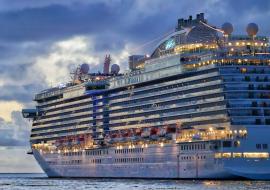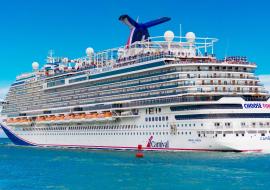Global Cruise Industry Sets Sail for Record 37.7 Million Passengers in 2025

The global cruise industry is charting a new course for growth in 2025, with an expected 37.7 million passengers, according to the latest State of the Cruise Industry report released by CLIA (Cruise Lines International Association). The surge is fueled by rising travel intentions among millennials, Generation X, and first-time cruisers eager to experience life at sea.
The report confirms that 82% of past passengers plan to cruise again, while 68% of international travelers are considering their first voyage — a strong indicator of the sector’s resilience and appeal. With increased investment in sustainable technologies, innovative itineraries, and a growing focus on multigenerational travel, cruise lines are adapting to meet the evolving demands of a more diverse and experience-driven audience.
Satisfaction, Diversity, and Personalization
The CLIA study highlights that 31% of cruise passengers over the past two years were first-timers — a reflection of strong customer satisfaction and accessible entry points. Meanwhile, multigenerational travel continues to rise, with nearly a third of guests cruising alongside three or more generations of family.
From adventure-filled family trips to high-end cultural voyages and expedition cruising, cruise lines are tailoring experiences to a broadening clientele. Notably, expedition cruises grew 22% in 2024, making them the fastest-growing segment of the market.
Sustainable Tourism and Energy Innovation
With travel planning often done months — or years — in advance, the cruise industry has become a model for managed, sustainable tourism. Long-term itinerary planning helps alleviate pressure on popular destinations, while advances in low-emission technologies are reducing the sector’s environmental footprint.
By 2028, half of the industry's new ship capacity will be powered by LNG, methanol, or biofuels, and 72% of vessels will be able to connect to shore-side electricity — drastically lowering emissions while docked.
Economic Impact and Future Outlook
Though cruises account for just 2% of total global tourism, the economic contribution is outsized: in 2023 alone, the industry generated a record $168 billion, including over $65 billion in the U.S., where it supports 290,000 direct jobs and contributes $25 billion in wages.
Cruise passengers also benefit local economies before and after their voyages: 69% stay in hotels at embarkation points, and 60% return to destinations they first discovered by cruise — amplifying tourism’s long-term value.
In 2024, 34.6 million travelers took a cruise, with North America as the largest source market. The Caribbean, Bahamas, and Bermuda led in popularity, capturing 43% of global departures, followed by the Mediterranean and other parts of Europe.
Looking ahead, the cruise industry is poised for further expansion, with 11 new vessels launching in 2025 and 56 more on order through 2036, representing a total investment of $56.8 billion. A growing share of the global fleet — over 70% — now consists of small and mid-sized ships, reflecting a strategic shift toward personalization, intimacy, and destination-focused experiences.
With robust demand, innovation in sustainability, and a diversified range of offerings, the cruise industry is sailing full steam ahead into what promises to be a landmark year.














